How to Finish a Guitar for Beginners
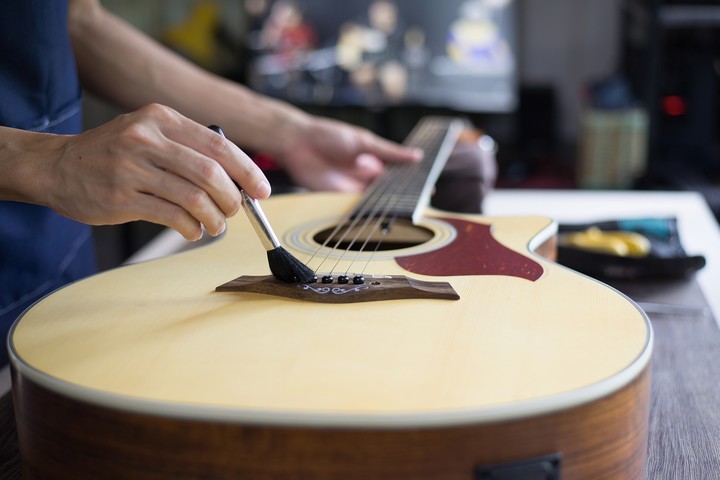
You can get spoilt for choice when it comes to guitar finishing options. You can stain, oil, or finish with a graduated colour combination. In addition, several factors should be considered when choosing the materials or finishing methods.
Typically, you can apply three main techniques to finish your guitar without expensive tools or expansive experience. The first one is using an oil finish with or without staining. You can also apply a mat finish over a stain or solid colours. Furthermore, a high gloss finish over solid colours also works.
Finishing a guitar is straightforward and achievable with a DIY procedure. You only need to understand the steps and materials to use. Having read this blog post, you can give your guitar a fine finish like a pro.
So, are you seeking to finish your guitar like a pro? Here is a straightforward guide.
Prepare the Surface

You must prepare the guitar surface for the job, regardless of the finishing method you choose to apply. It should be ready to receive the finish and bring out the best results. You may want your guitar to appear smooth and shining for comfort and looks.
You can quickly achieve this by sanding and treating the grain. You can sand from 220, 320, 400, or sometimes up to 600 grits, but this far may not be necessary in many cases.
Stain the Guitar Surface

Some colour will be nice for your guitar, regardless of the transparent oil or top coat. Besides adding colour, dyes and stains maintain the natural texture of the wood. You can achieve this in three simple ways.
First, you can tint the entire surface with a single stain. You can also create any gradient or pick one of the popular bursts. Most stains are water-based. The best thing is that you can use a clean rag or a lintless paper to apply this.
The wood absorbs the stains without tampering with the feel. However, apply the stain on a smooth surface to avoid sanding it off.
Oil Finishing Technique
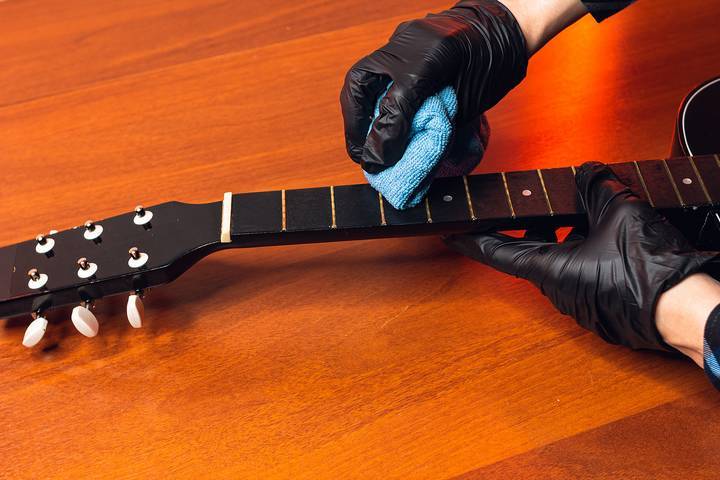
Oil is one of the simplest guitar finishing methods. However, it works best when you want to retain the wood’s natural look and do not care about gloss. Moreover, you can make it appear professional. The wood absorbs the first few layers, deepening its natural colour.
More layering builds a thicker film layer that you can polish to create a beautiful sheen. While it may not provide the hard shell or the mirror shine of nitrocellulose lacquer, oil finishing protects your guitar against dirt and moisture. It also makes it appear attractive and shining.
How to Apply Oil Finishing
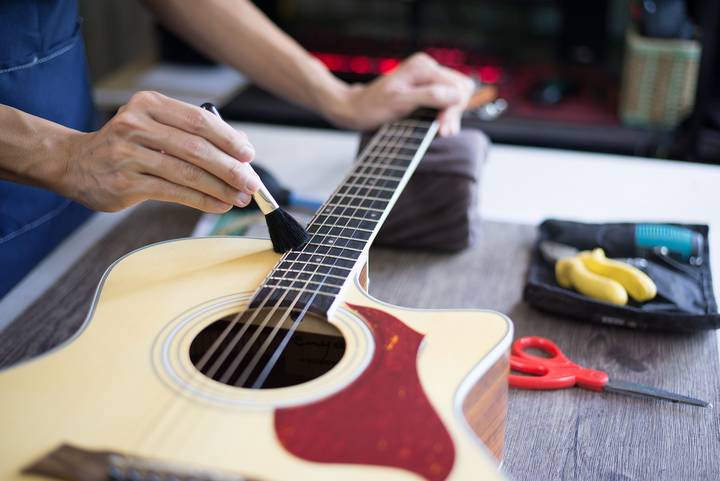
The first layer is the heaviest. Use a lintless paper towel or clean rag to generously apply the oil on the surface. Rub it in thoroughly and wipe off the excess oil. Depending on the oil density, you may need to give it a few hours to soak in before the second layer. Wait until the surface is dry to touch.
Oil application tip: Use 1200-1500-grit paper for the first layer. A sponge works well. It is best for sealing the pores. Do not allow the residue to dry on the wood.
The second layer follows the same procedure, requiring less oil. Afterward, keep adding more layers as they slowly build up. Applying a layer per day would allow them to dry well. Nonetheless, you can do coats a day in warmer weather.
After a few layers, you may need to make the surface smoother by sanding it lightly. Once you achieve your desired look, you may finalize the process with light buffing to create a lovely sheen.
Matt Coat Finishing
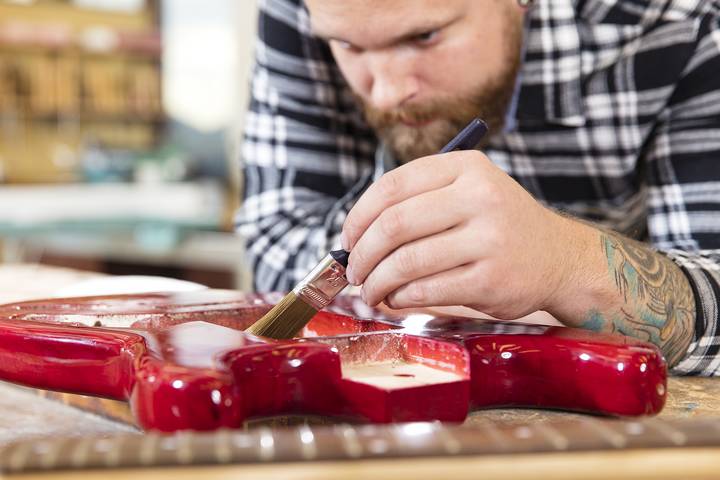
You can also give your guitar a matt clear coat finish. The main difference between glossy and matt or satin finish is that the latter has some suspended particles. As you add your layers, these particles may create a haze in the clear coat.
Nonetheless, using the glossy version and 1200 or 1500 grip paper to sand the final layer can help you avoid that. You can also scuff the last layer using a 0000-steel wool. If you do not like these solutions, consider the matt/satin spray for the final coat.
How to Give Your Guitar a Glossy Finish
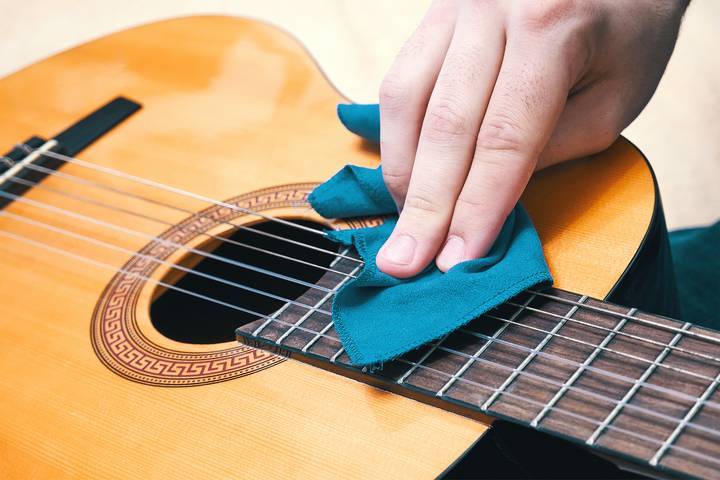
Creating a shining glass-like finish requires a lot of sanding and buffing. Professionals use expensive materials and buffing wheels to achieve the desired finish. However, you can give your guitar that professional appearance without investing in costly materials.
You only need to sand it to the highest grit and polish it to a high gloss.
How to Apply Polish and Buff
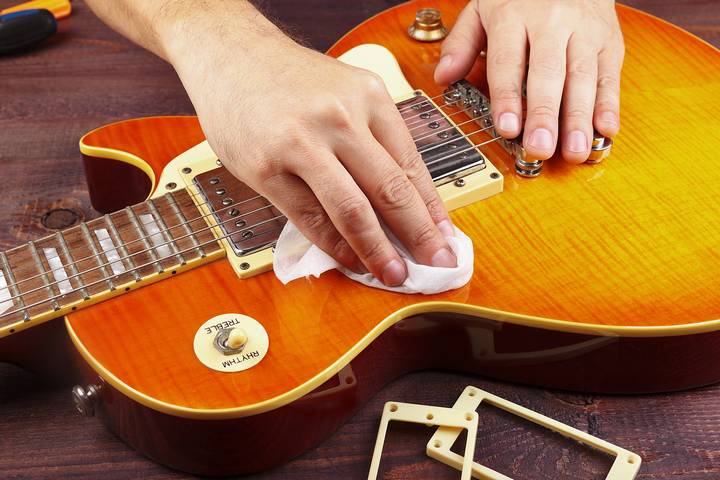
Whether working by hand or not, you must start with the most aggressive compound and rub it in circular motions. Apply over the entire surface and wipe off the residue. You may need to sprinkle some water if it is too dry or thick.
At this point, you should be achieving a nice shine off the surface. Repeat the procedure with a finer compound. If you have a third, finer compound, keep going. However, ensure you use a new cloth for every layer. Suppose the final layer does not produce your desired shine. Repeat it until your guitar shines.





